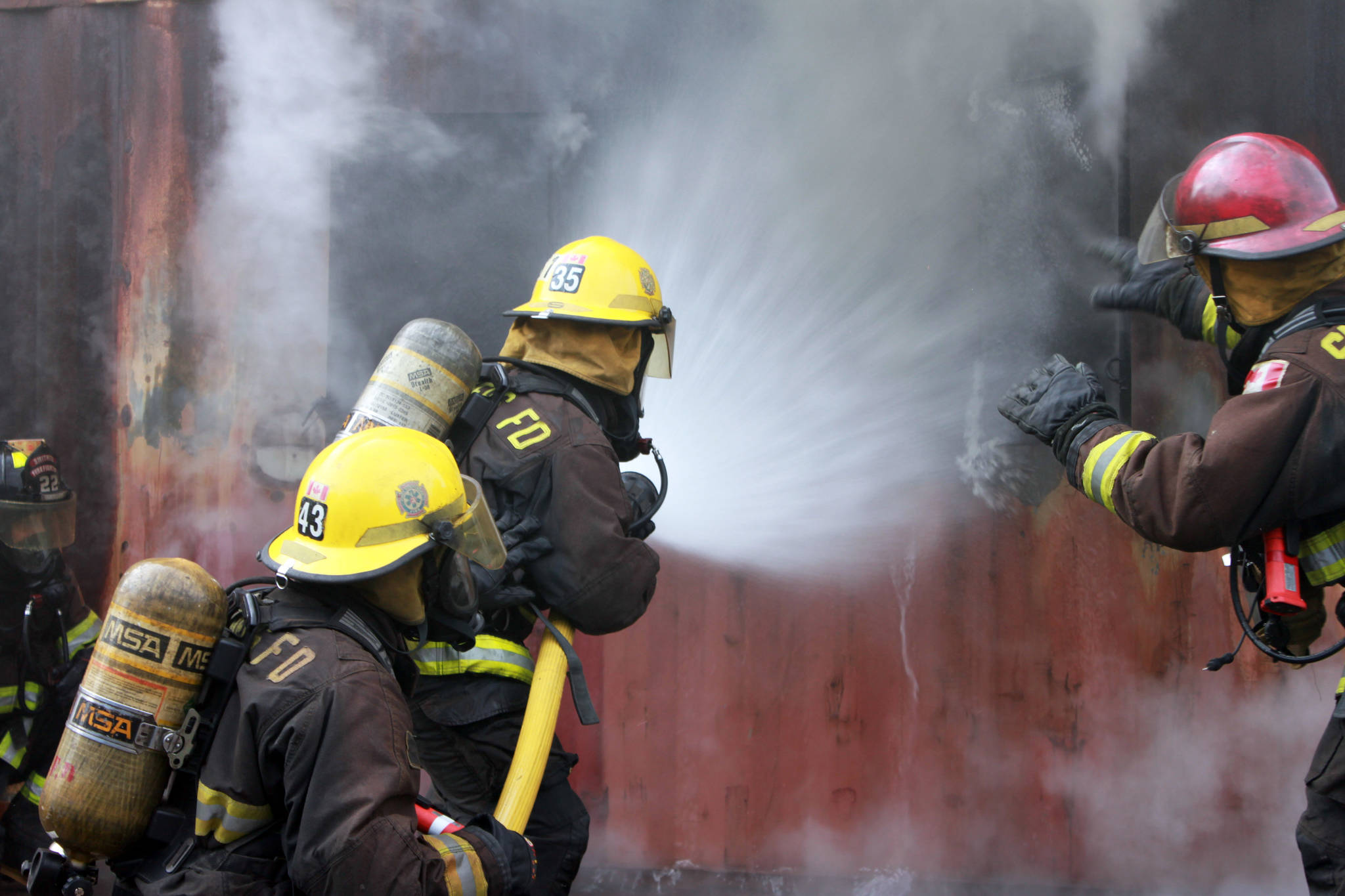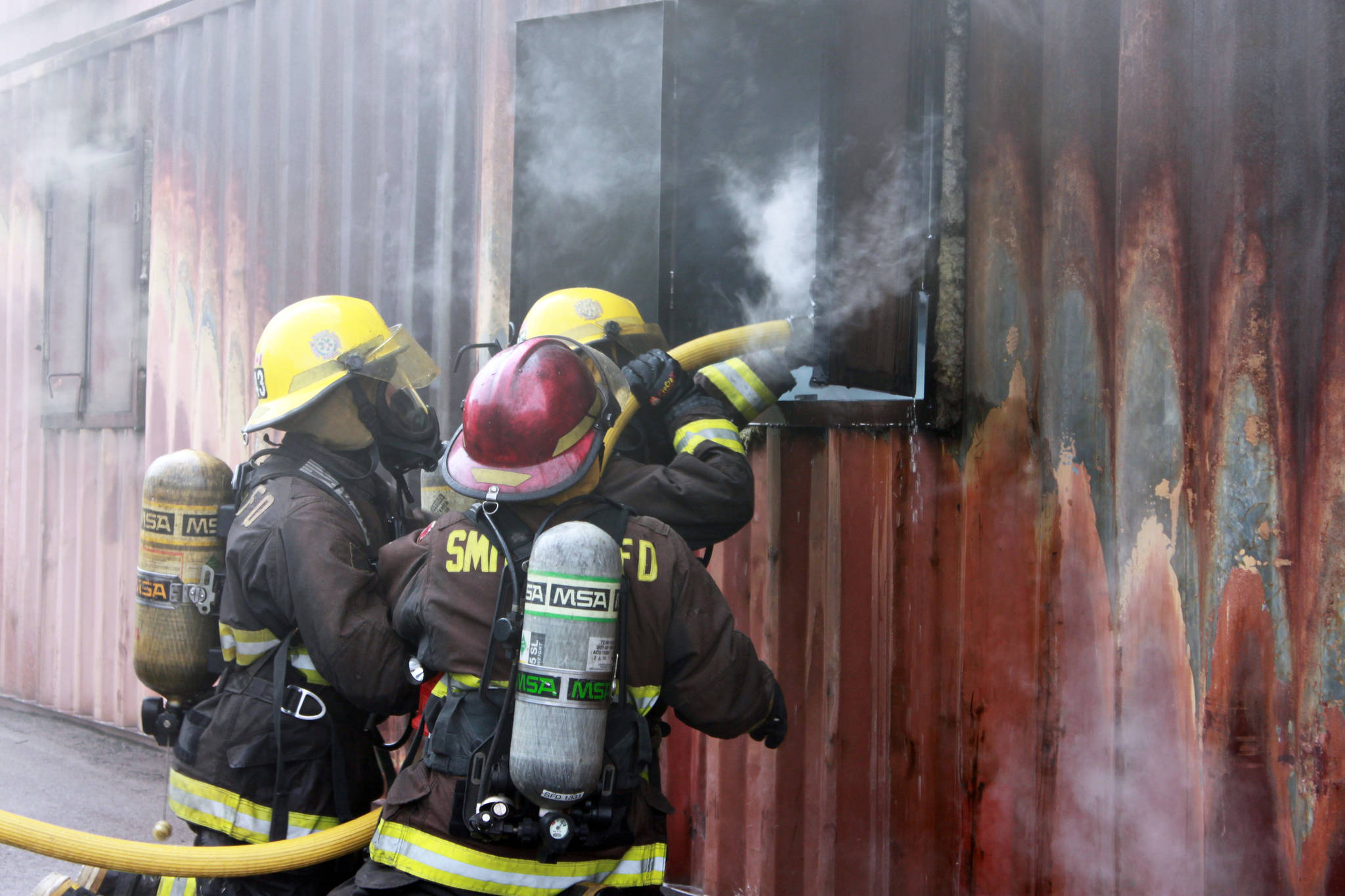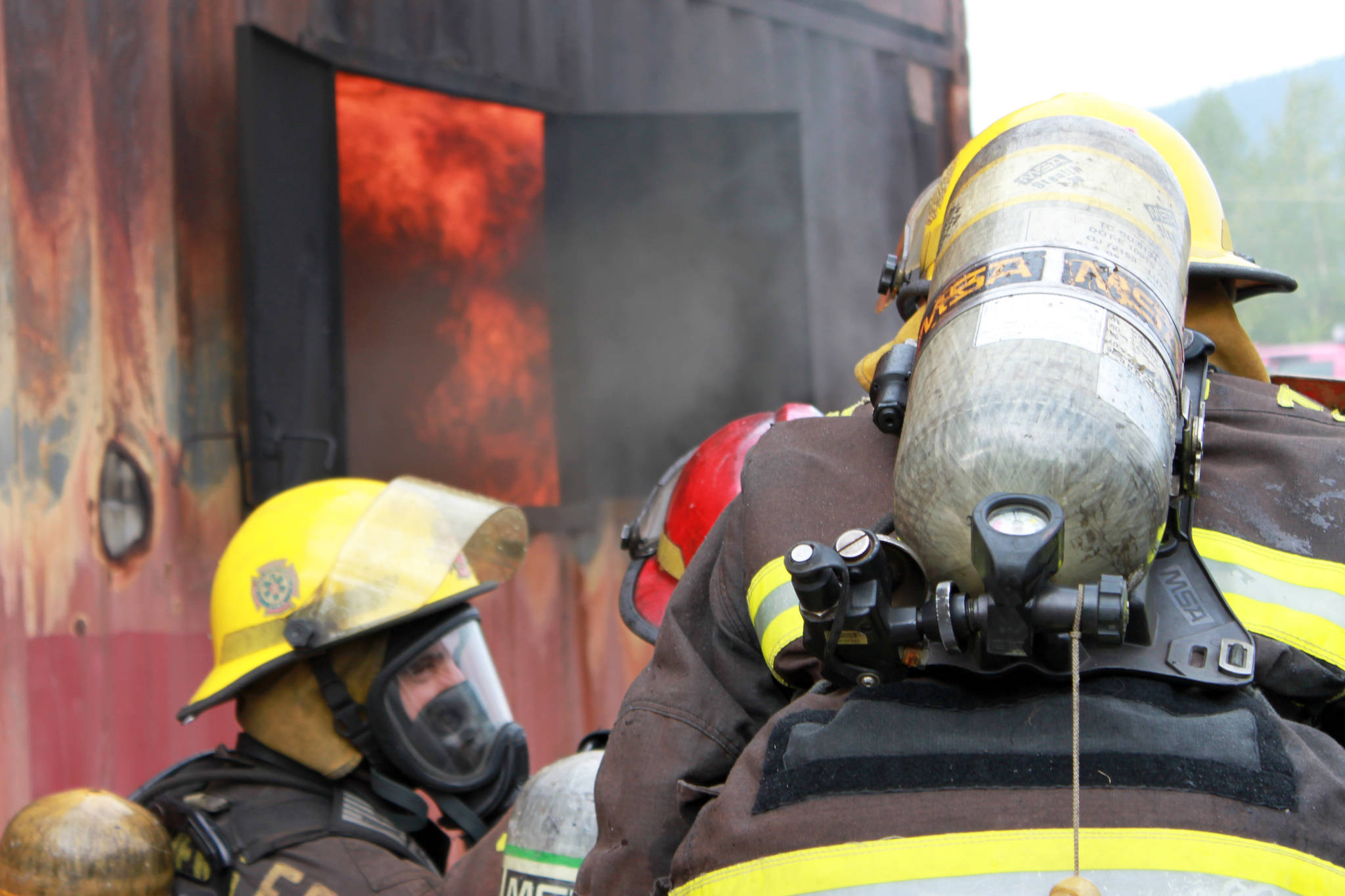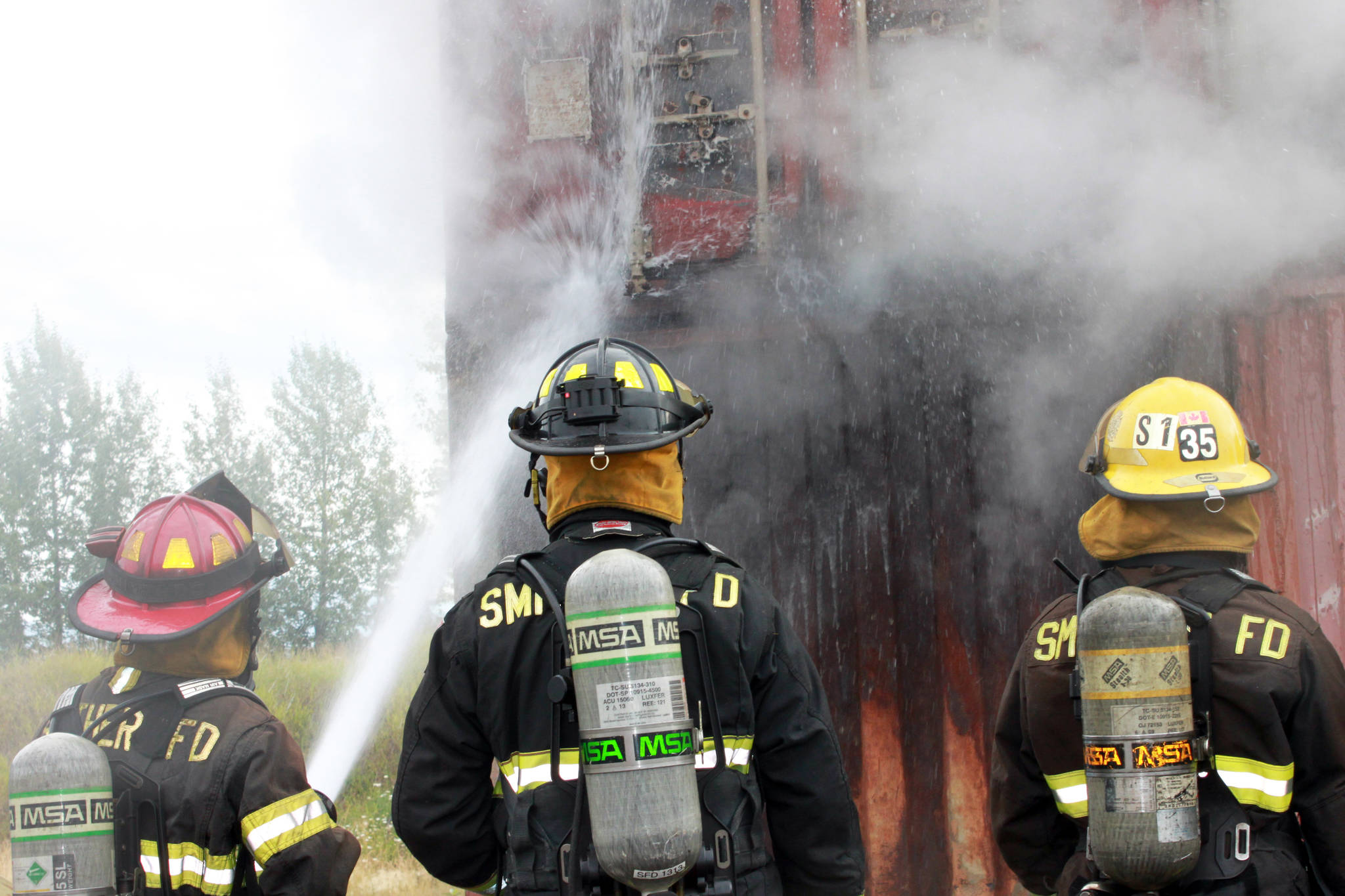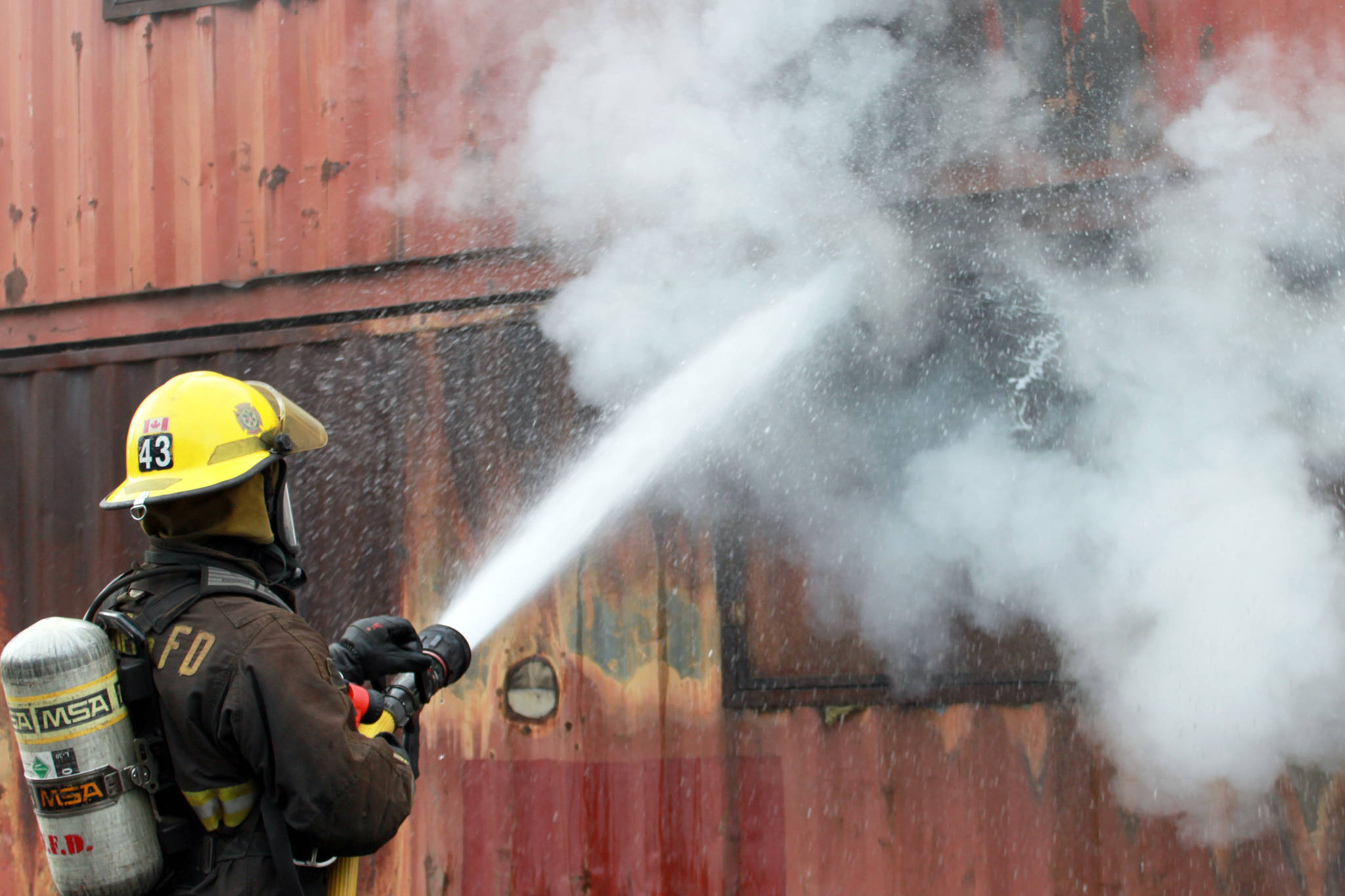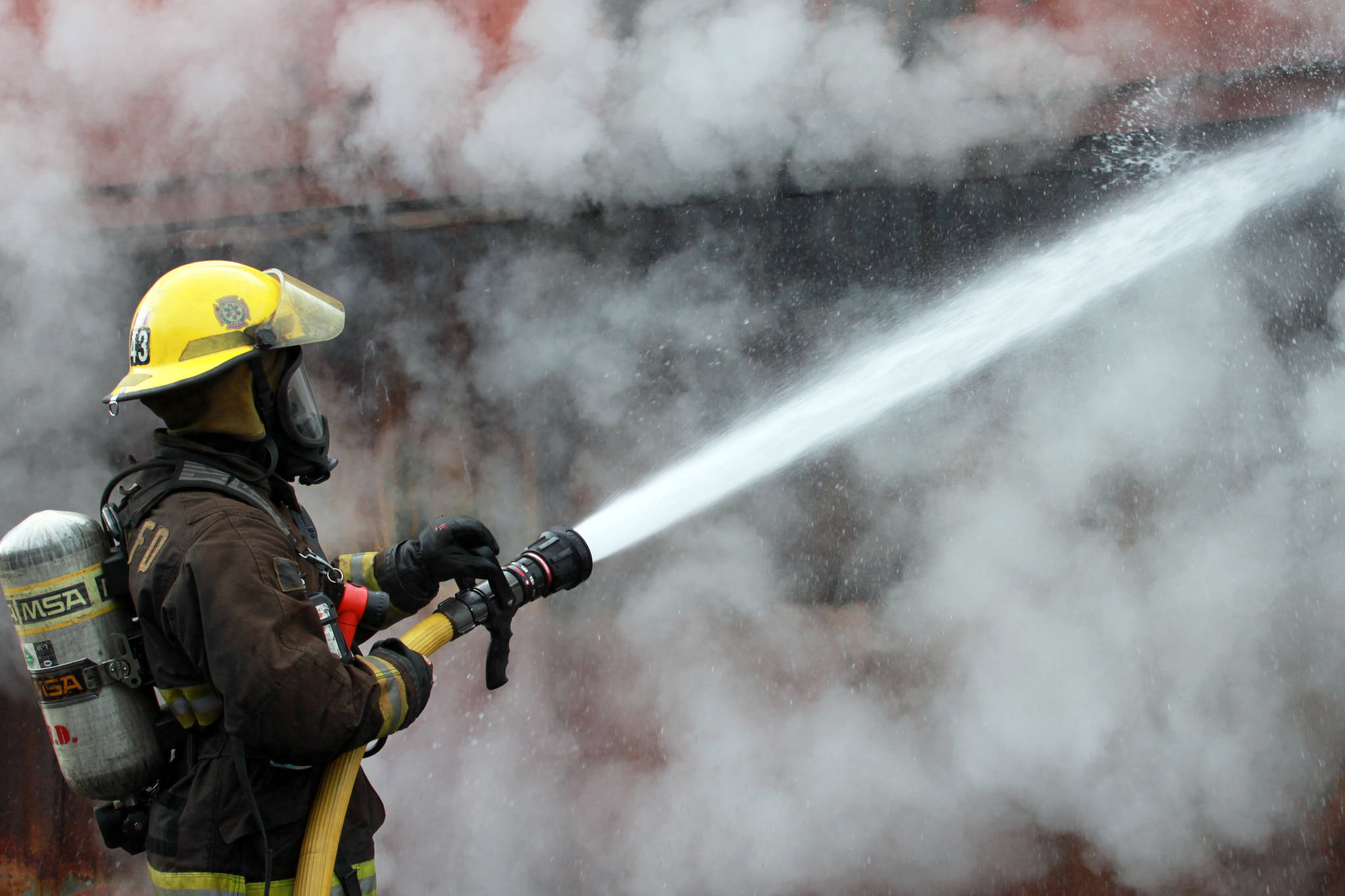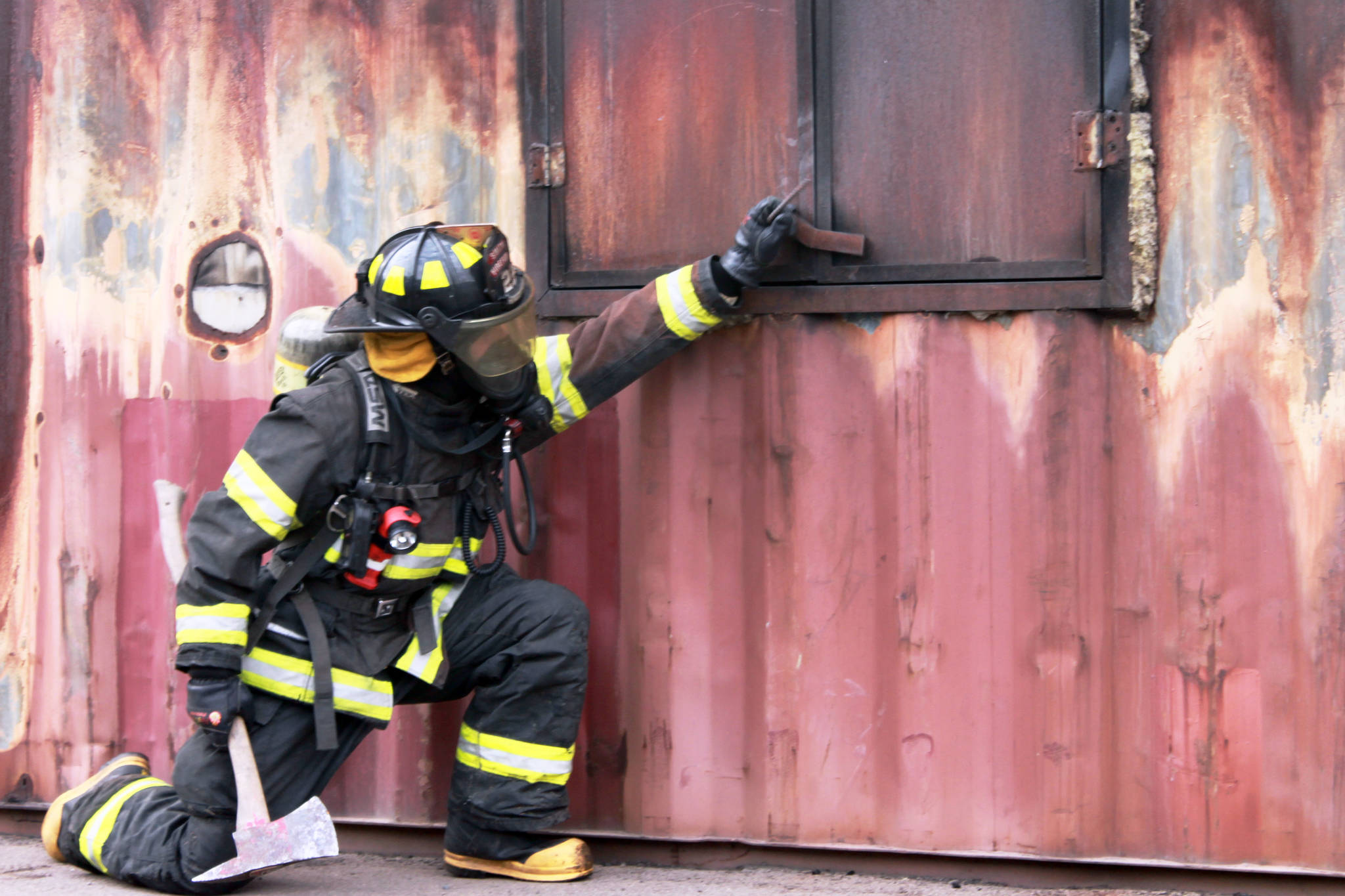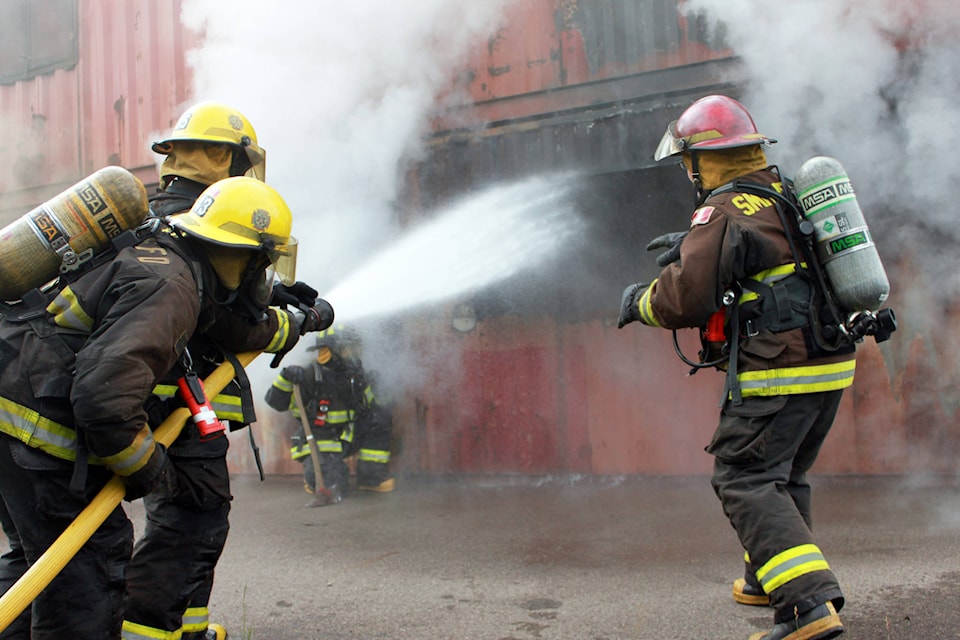How do firefighters train for real life emergencies? The answer is simple…with the help of simulators and real fire.
For the over 40 volunteer firefighters in Smithers, training for all types of calls is what saves lives.
Some of those members recently participated in training for a structure fire, creating similar conditions to a basement, kitchen or living room fire.
The live fire training building consists of several shipping containers meshed to create a typical two-storey home with rooms.
When the department brings on new recruits, they will all go through this exact same training, but not before hitting the books. Smithers Fire Chief Keith Stecko stated those recruits learn hose stream management, understand how fire behaviour reacts in various structures as well as how to deal with those fires.
“We’ll have instances where we’re dealing with ground-level fires, second story fires, basement fires and it really brings together everything that they’ve been learning as part of their spectrum of training,” he said.
It was that type of training that firefighters recently took part in. It’s not just for new recruits though, all firefighters take part in training such as that to sharpen their skills throughout the year.
They also practiced in a flashover chamber, a dangerous event that firefighters may face in real life.
A flashover is when combustible materials in a room such as a living room or become heated, they undergo thermal decomposition and release flammable gases. Flashover occurs when the majority of the exposed surfaces in a space are heated to their auto-ignition temperature and emit flammable gases. Flashover normally occurs at 500 degrees Celsius or greater.
“A flashover is one of the most dangerous conditions that a firefighter can face…not too many ever survive a true flashover,” Stecko stated.
An example of a flashover is when fire involving a piece of furniture can produce a layer of hot smoke which spreads across the ceiling in the room. The hot buoyant smoke layer grows in depth, as it is bounded by the walls of the room. The radiated heat from this layer heats the surfaces of the directly exposed combustible materials in the room, causing them to give off flammable gases via pyrolysis. When the temperatures of the evolved gases become high enough, these gases will ignite throughout their extent.
The flashover chamber here in Smithers allows firefighters to create the identical conditions for a flashover and recognize the signs before it happens. The chamber also allows them to understand what they need to do in order to bring it under control before the fire reaches full flashover mode.
“It’s real, we’re in real fire, we deal with real events. The potential to get burned is [as] real as fighting a structure fire during regular calls,” he said.
In addition to training for building fires, the facility is also equipped with a car that allows firefighters to train for those types of emergencies.
They recently added an aircraft to their facility, although it’s not in operation yet.
“It needs quite a bit of work so that we can train on it effectively. There’s a lot of sharp edges and things that we need to do to make it safe so that when we’re training with it, we don’t accidentally injured,” he said.
The air plane is from a movie prop that was filmed in Smithers.
“The producer graciously donated it to the fire department and we are happy to use that as one of our training aids,” Stecko stated.
Since there’s an airport within the area of Smithers, the donated aircraft once ready for training will allow firefighters to simulate engine fires, a hard landing or a crash.
After the firefighters completed the live life training, they headed back to the fire hall to debrief and get feedback on what worked and what didn’t. Chief Stecko said it went well.
“It was continuous all morning long, it focused all around working inside the building and dealing with various types of set fires…all in all very successful.”
Stecko added on average they are called to between 12 and 13 structure fires each year.
These types of training exercises take place all year long for the dozens of volunteer firefighters that protect Smithers.
